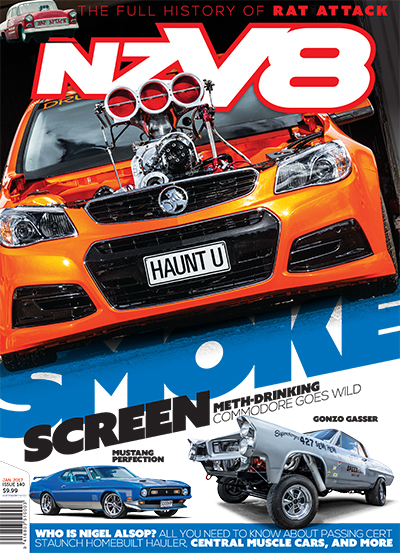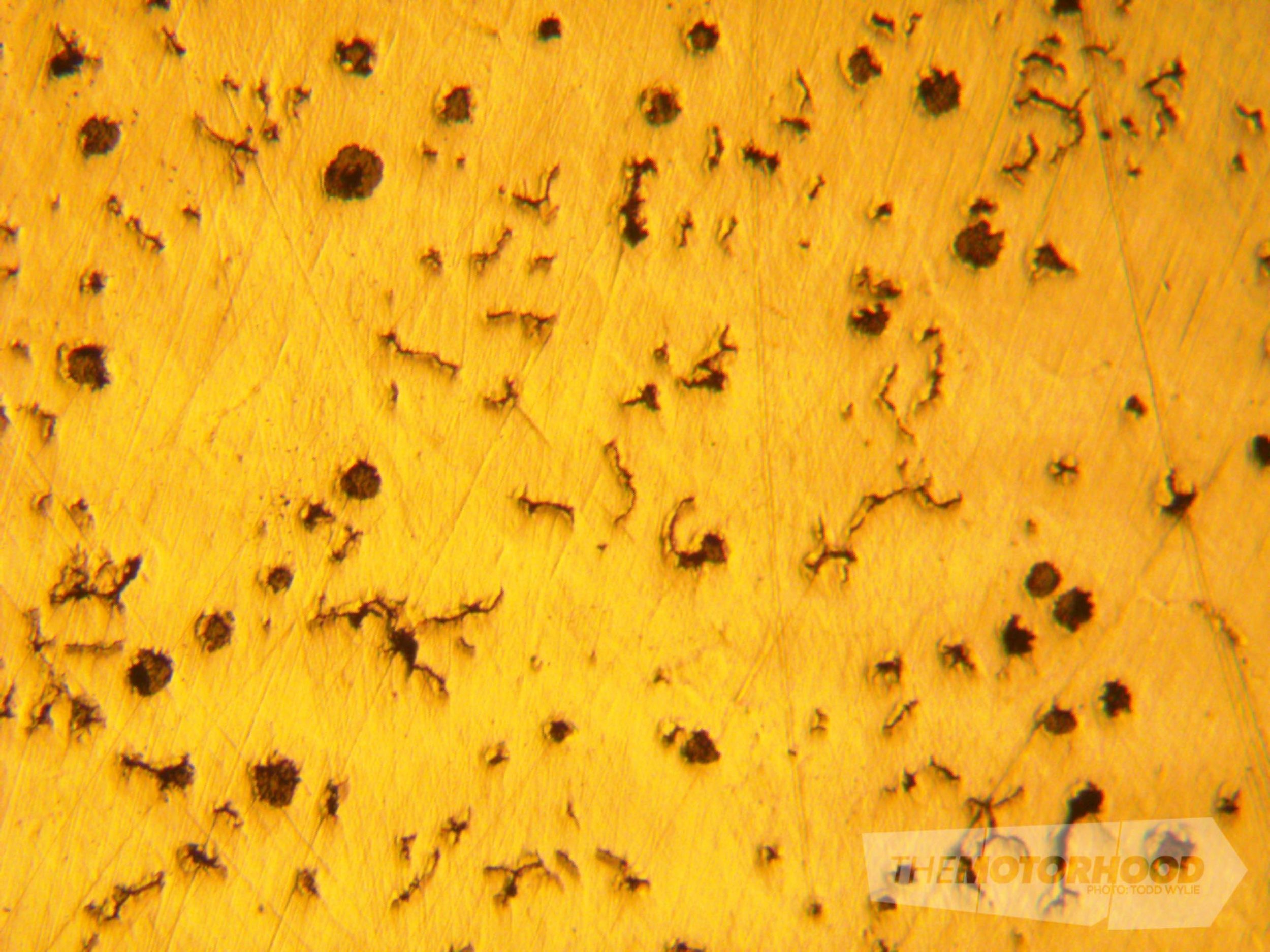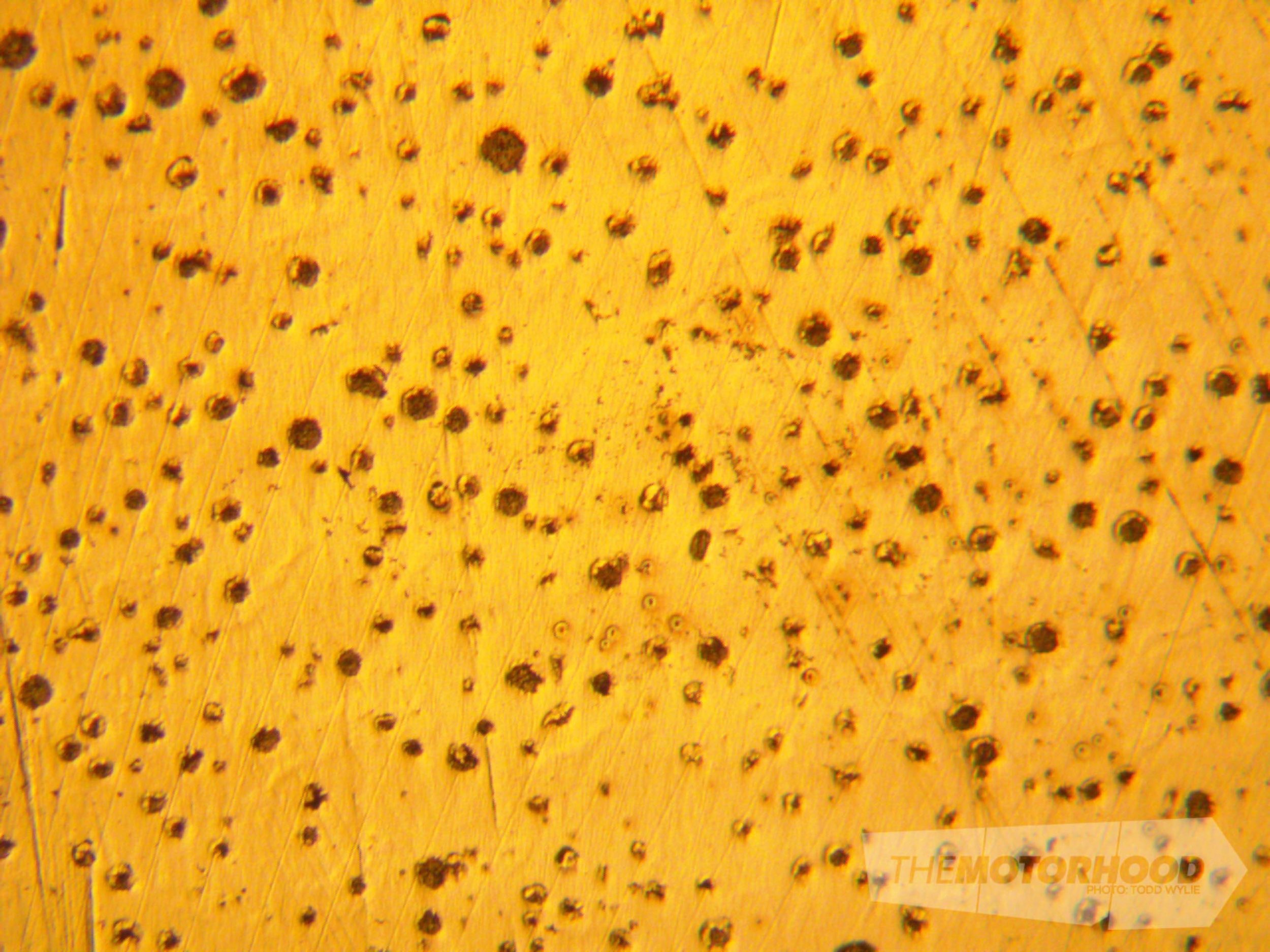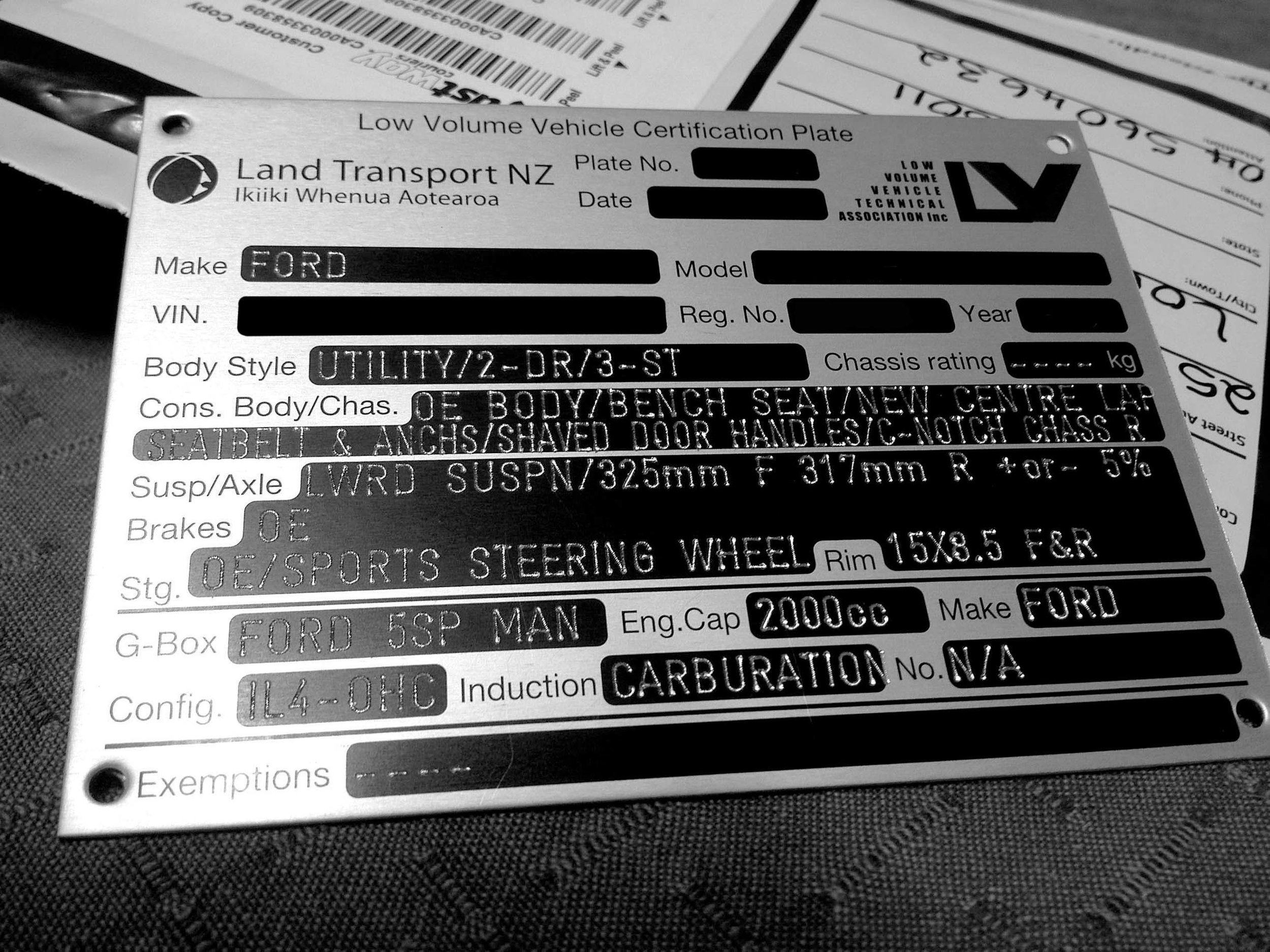data-animation-override>
“The LVVTA certification process is the subject of many questions and accusations, so we spent a day in the LVVTA office to find out the truth about how the process really works”
Just as a new house or commercial building needs to be signed off by the local council building inspector to ensure it’s both safe and fit for purpose, modified vehicles in New Zealand also need certification. While some of those involved with modifying vehicles since before the certification process was introduced question why things can’t just be like they were in the old days, the truth is that the world and safety standards have moved on since then. Of course, being the organization that administers the system, LVVTA has frequently been accused of being the bad guy or of being a roadblock to people having fun. We can assure you that’s not the case at all. In fact, the process was developed to prevent exactly the latter and to ensure that modifying cars wasn’t banned outright.
The theory held by those who put their hands up back in the late 1980s, when the government was introducing vehicle safety standards, was that, as hot rodders and car lovers, they’d be the best ones to ensure that modifications could — and would — be carried out safely, rather than having pencil pushers in a government department making the rules. Included in that group of people was Tony Johnson. While you may know him now as a former drag racer or as a columnist in this very magazine, back then, Tony was working for New Zealand Hot Rod Magazine and had just become president of the NZHRA.
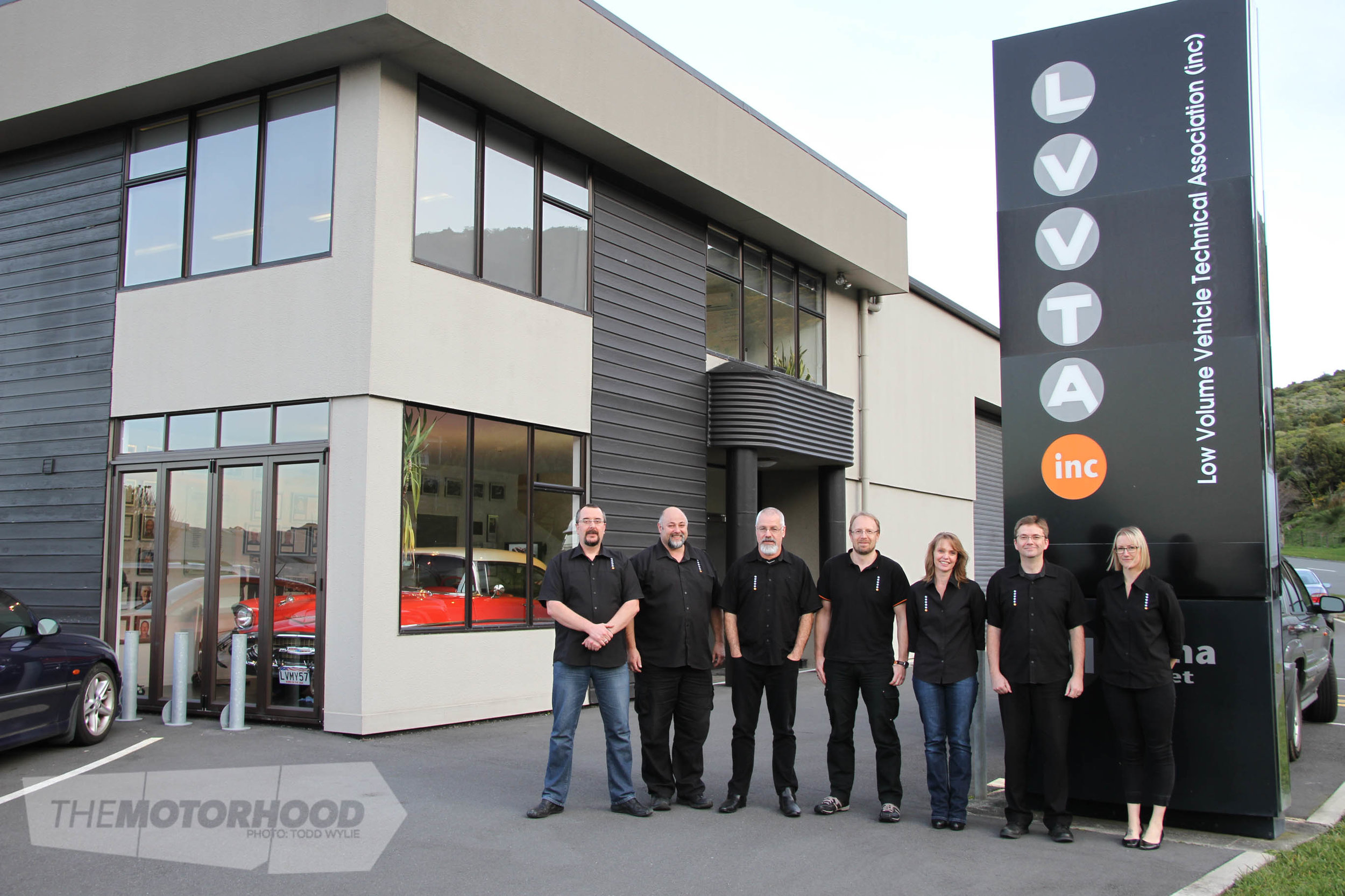
Tony’s way with words, mixed with his background as a car builder and his involvement in the NZHRA, saw him lead the charge that ended up with the Ministry of Transport (MoT — the predecessor to the NZTA) agreeing to let the NZHRA essentially govern itself. This same permission was later granted to other enthusiast groups, such as the Sports Car Club of New Zealand and the Constructors Car Club. In early 1992, after many hours of voluntary work by a huge number of people, NZHRA’s certification system was up and running, and the first two vehicles were certified prior to their debut at the 1992 Street Rod Nationals.
The MoT saw the professionalism of the NZHRA and its level of knowledge, and it wasn’t long before the MoT asked if the NZHRA could help out modified vehicle owners who were not NZHRA members.
With six individual groups operating their own self-regulating systems — the NZHRA, Sports Car Club of New Zealand, MotorSport New Zealand, New Zealand Motor Caravan Association, Vehicle Association of New Zealand for People with Disabilities, and Constructors Car Club — it was soon agreed that a parent body was required to represent all parties. Thus, LVVTA was formed. A few years later, the Vintage Car Club of New Zealand, New Zealand Four Wheel Drive Association, Component Car Manufacturers Association (NZ), and Kiwi Trikers also joined LVVTA, and the association could now liaise directly with the government on behalf of all member groups.
The obvious issue of each group having not only its own processes but interpreting the government’s rules in its own way soon became apparent, and it was agreed to merge all systems into one. As the NZHRA had not only done around 70 per cent of the certifications so far but also had the most advanced system in operation, it was agreed that this would be the standard into which the others would be integrated.
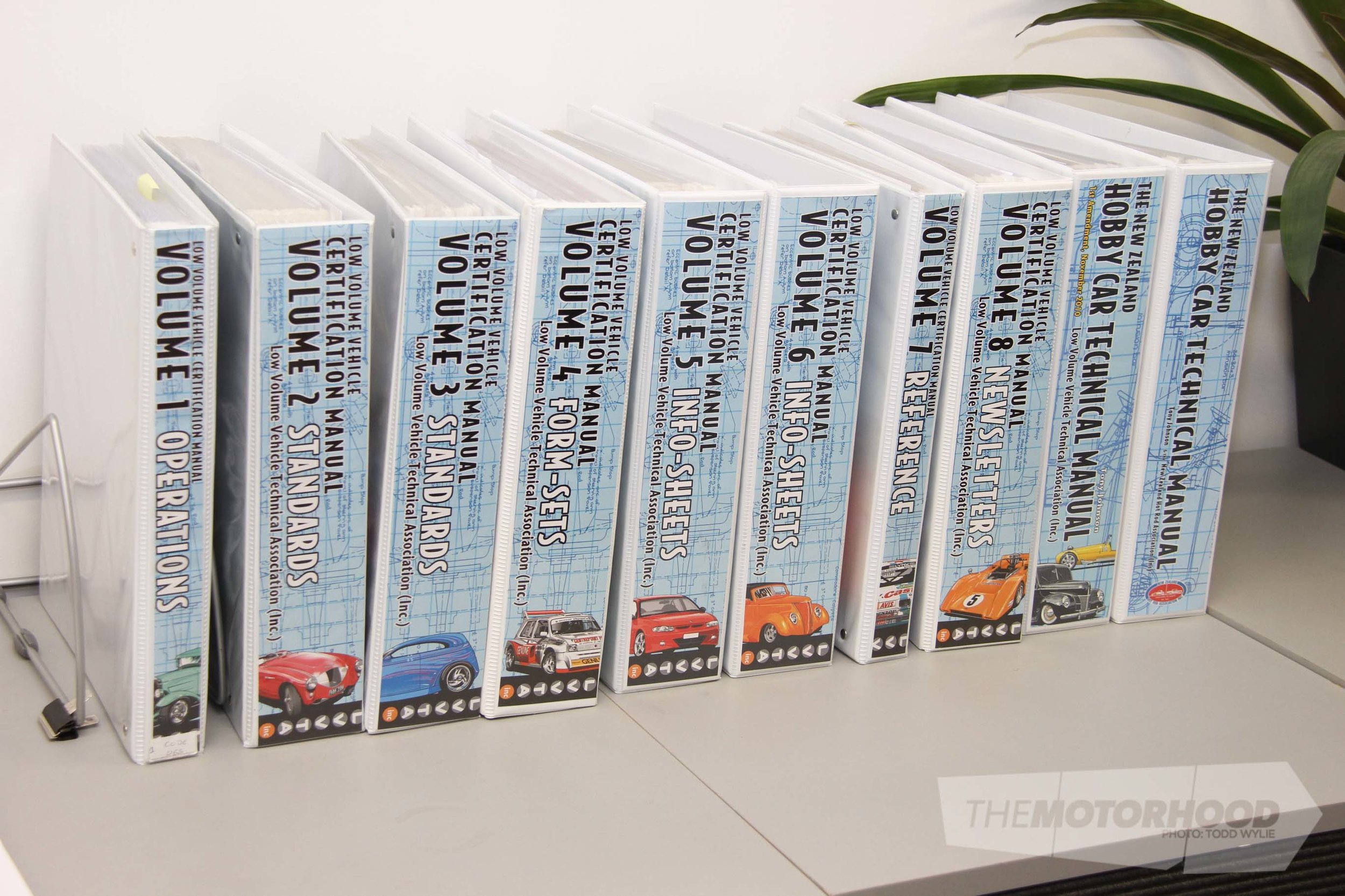
That new all-encompassing system was up and running in 1996 and has continued to evolve as new vehicle standards have been released. The association, as a business, is still owned by the member associations and is nowadays run out of Porirua, just north of Wellington, with 44 certifiers based around the country. What many people don’t realize is that the not-for-profit organization has no way of funding itself apart from the fee it receives from certifications and the sale of The New Zealand Hobby Car Technical Manual. It’s not a big-dollar business, and it’s certainly not there just to help line someone’s pockets.
While the certifiers themselves are all contractors, there are currently seven staff employed at head office. These people play a critical role in ensuring we keep the privilege of driving the cars we love. The interesting thing is that these guys and girls are far from being pencil pushers who don’t care about cars — which we’ve seen them accused of in social media. In fact, each and every one of them owns, drives, and works on cars that fall directly under the LVVTA jurisdiction. The photos on the wall in the office may at first look like a collection of random — albeit, all modified — cars, but, in fact, they are cars belonging to the staff who work there. Don’t go thinking the office is in a boring government-type building, either, as it is decorated with all sorts of hot rod memorabilia, even on the walls in the toilet. Yep, these guys and girls are all true car lovers who take great pride in what they do. For them, it’s a passion, not just a way to pay the bills, so when people bag them out, they take it personally.

We kicked off our day in their office by spending time with Frances Bradey, who is in charge of plate production — a very critical piece of the process, and a part that is far more interesting than we expected. Frances doesn’t sit all day feeding pieces of metal into an engraving machine; she has a complex role that involves lots of switching between the in-house processing software to the NZTA’s database and beyond. Being a trained mechanic, she’s far more than the pretty face you first meet.
Part of Frances’ role is to double-check not only the info provided by the certifiers but also the accompanying photographs. While most car owners only see the certifier inspect the car — if that — a barrage of accompanying paperwork must also be completed. Essentially, for each of the 20-odd types of modification, there’s what is called a ‘form-set’ — a checklist that must be completed. Say, for example, you require a cert for simply having coilover suspension, the certifier would complete only the Suspension Form-set. However, if your car has a modified suspension set-up, modified brakes, and an engine conversion, three separate form-sets will need to be completed. Each form-set has a bunch of items that must be checked off, each one correlating to an area of the LVVTA Hobby Car Technical Manual, in which the requirements are outlined.
It’s Frances’ job to ensure that these form-sets are completed correctly as well as to confirm that details such as VIN numbers are correct, and that the VIN number and vehicle description match those which the NZTA has on file. Assuming there’s nothing out of the ordinary, the paperwork will be sorted within about half an hour and the files sent through to the engraving machine, where a blank plate will be waiting. With the press of a button, the plate will be engraved then dropped into a courier bag for dispatch back to the certifier the very same day. An email will then be sent to let the certifier know it’s on its way. It was interesting to note how quick the process was — assuming, of course, that the certifier has filled in the paperwork correctly. It’s a common belief that the time it takes for the plates to get produced is a hold-up, but, from what we observed, that’s not the case. In over 90 per cent of certifications, Frances has the cert plate produced and back out on the courier to the certifier the same day she receives their paperwork.
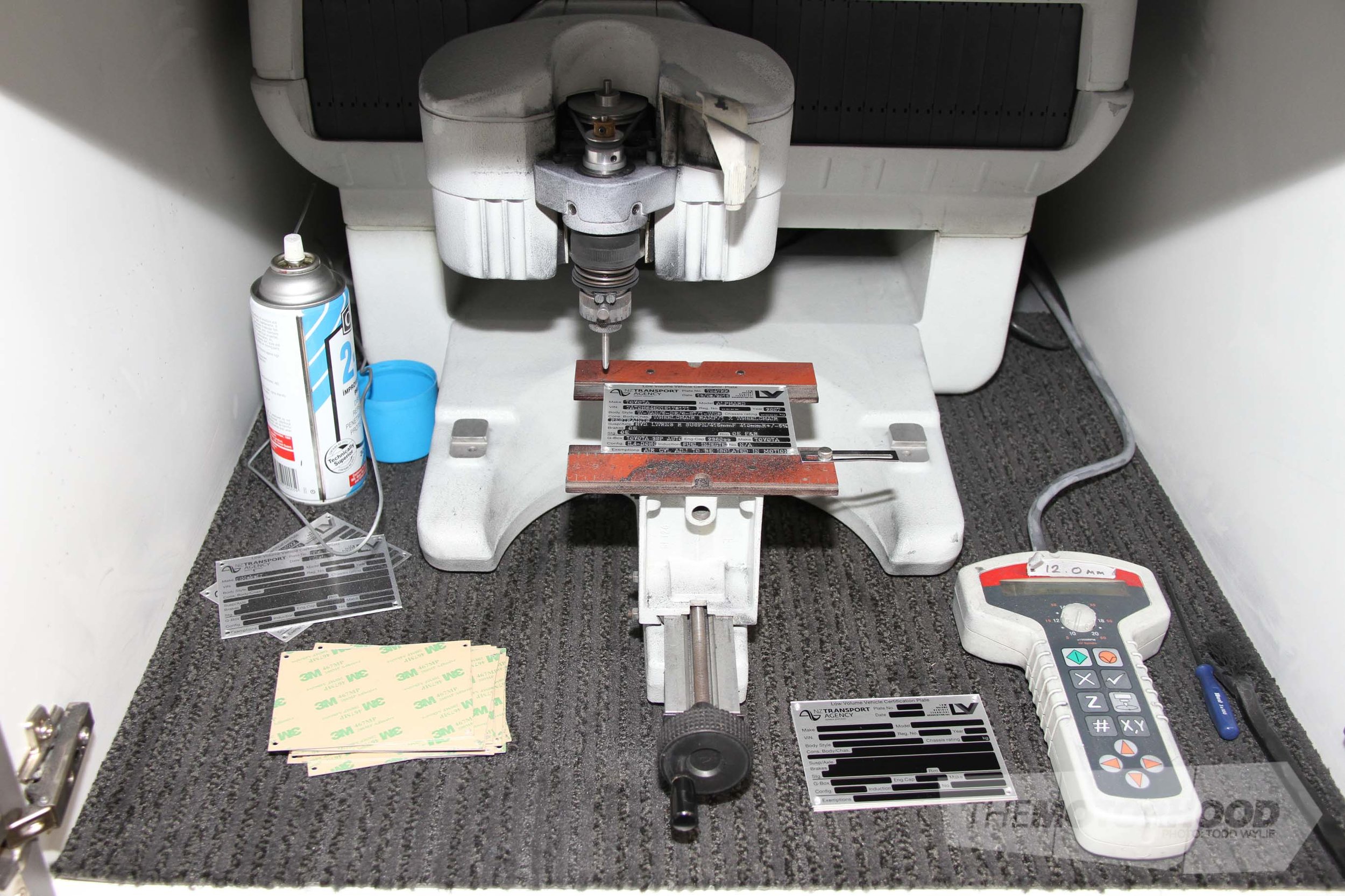
While Frances checks off the more mainstream modifications, the process is a bit more complex for vehicles that are more intensively modified or scratch built. For some major modification work, the owner will need to apply for Technical Advisory Committee (TAC) approval. This process is relatively straightforward, with the paperwork required being part of the Hobby Car Technical Manual, which, if anyone is modifying a vehicle to this extent, is a fairly essential purchase.
Again, the process is not dissimilar to gaining building consent before building a house: the owner or builder completes an application and includes with it technical diagrams of what they propose to build. The applications are then reviewed by the TAC — a group of 11 highly qualified people from a varying range of backgrounds who donate their time to the cause. Included in this group are well-known car builders such as Terry Bowden; custom trike builder and extremely well-qualified welder Kerry Buchanan; an aircraft engineer; a finite element analysis expert; and LVVTA’s Technical Officer, Justin Hansen, who manages the approval process and chairs the TAC meetings.
The committee reviews all the applications objectively, with ensuring safety the number-one priority. Like the rest of the LVV certification process, the methodology is to use technical knowledge and assessment as opposed to destructive or physical stress testing. This affords owners the ability to create custom parts just the once rather than having to send multiple items for testing.
Of course, there is the odd occasion when no previous knowledge or standards are available, even by looking internationally — a case in point being a fibreglass replica Ford pickup cab that was included in a recent TAC application. The owner insisted on mounting the upper seat-belt anchorages directly to the fibreglass cab instead of constructing a roll hoop, as would usually be used in a vehicle such as this. Fortunately, the owner, a composite specialist who spends his days building super yachts, was confident about the strength of his workmanship and had no problem with the cab being subjected to physical testing of the kind usually reserved for mass-produced disability vehicle seat-belt systems. Of course, this is at the extreme end of requirements, as the whole premise of the LVV system is ensuring safety without destructive testing or cost-prohibitive analysis being required. A similar situation arose recently with a Holden Barina that was modified for a disabled person who required the steering, brakes, and accelerator to be mounted on a single joystick fitted to the driver’s door. With builds like this, there really is no other way to ensure they’re fit for purpose than in-depth investigation.
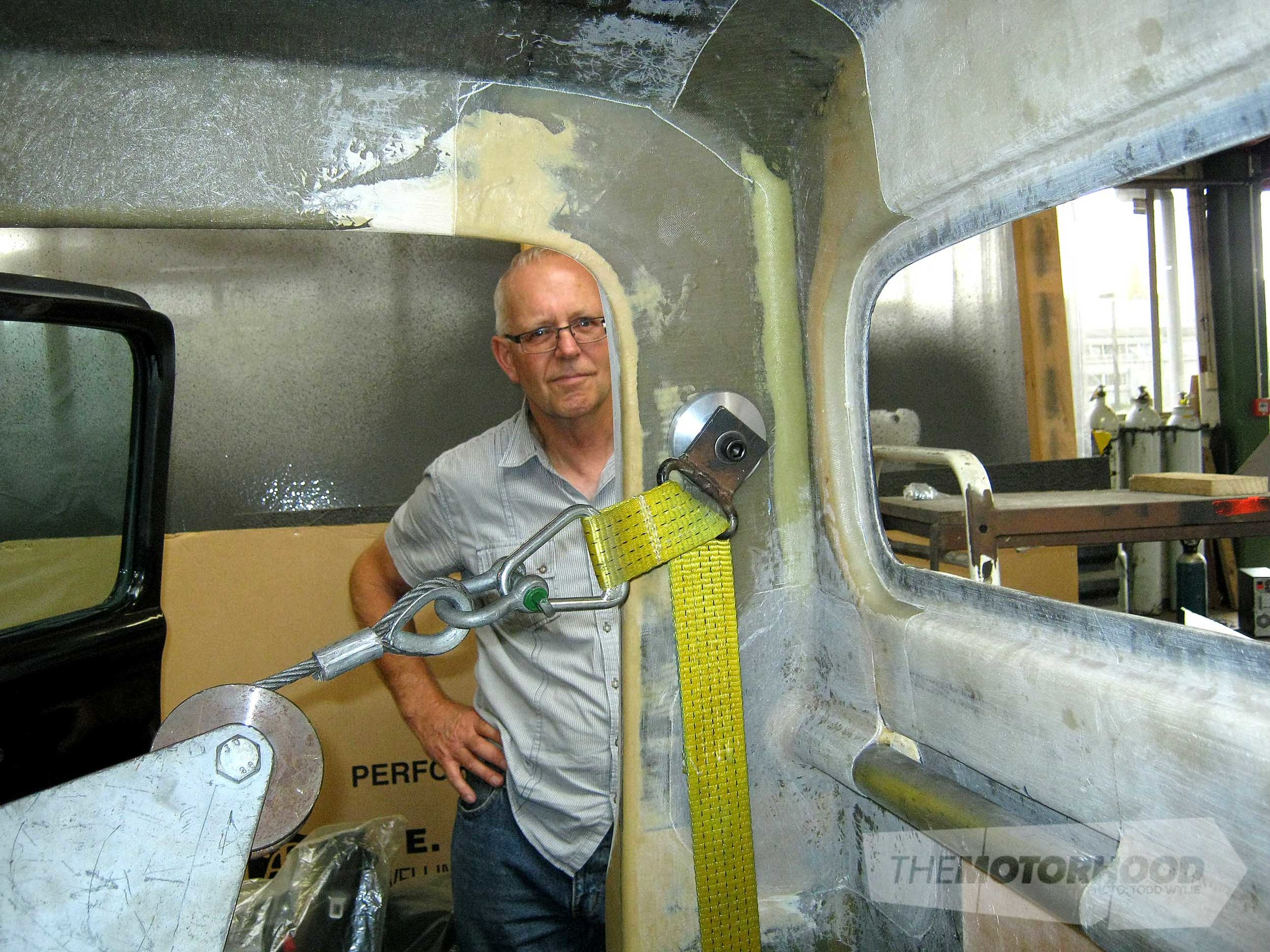
Besides being a member of the TAC, Justin, a mechanic who has been with LVVTA for seven years, is responsible for reviewing any complex form-sets submitted by certifiers as well as for creating info sheets and assisting with certifier training. Included in Justin’s checking is not just the paperwork but also the photos of the vehicles that the certifier submits. In the case of a scratch-built car, he’d expect to see around 100 photos. When asked if that’s a hassle for the certifier, Justin said it actually helps, as the cars are then so well documented that it’s easy to see if anything is changed (in the case of a vehicle later being involved in an accident and its certification being called into question.)
While we were with Justin, we saw an excellent instance of the importance of his role as a backstop and double-checker. The example that unfolded before us was of a hot rod that the owner had told the certifier had been built using a Rods by Reid independent front end. Upon inspection of the photos that were supplied by the certifier, it was obvious to Justin that it wasn’t a Reid front end as stated. To be sure, he emailed the photos to Rods by Reid to confirm; the reply was as he’d expected: the front end was of unknown origin. Whereas Rods by Reid front-end assemblies are ‘type approved’, meaning they don’t require any further investigation as they’re known to surpass requirements, the unknown front end is exactly that: unknown. While it’s unclear whether the owner knew that it was not a genuine Reid part, the most likely answer is that they knew it wasn’t and were trying to fool the system, potentially at the risk of their own and others’ safety.
Bad (left), Good (right): These shots show what is visible through an extremely high-powered microscope used to test I-beam axles for ductility. The image on the left shows a sub-standard casting process, as opposed to the one on the right. The long strands are what to look out for.
The result of this misinformation, intentional or not, is that the process is now held up — the front end needs to be investigated because various low-quality off-the-shelf items are available, of which this could potentially be one. Of course, in this situation, chances are that the owner will then be quick to blame the hold-up on LVVTA, when that is not the case at all.
Justin pointed out that his role isn’t about trying to catch the certifiers out or about trying to make the process harder for anyone. However, inspecting a highly modified vehicle is a very complex process, so a second set of eyes is always beneficial. Being a long-term drag racing fan and crew member, and car modifier, as well as having a mechanical background, he’s well qualified for the task at hand.
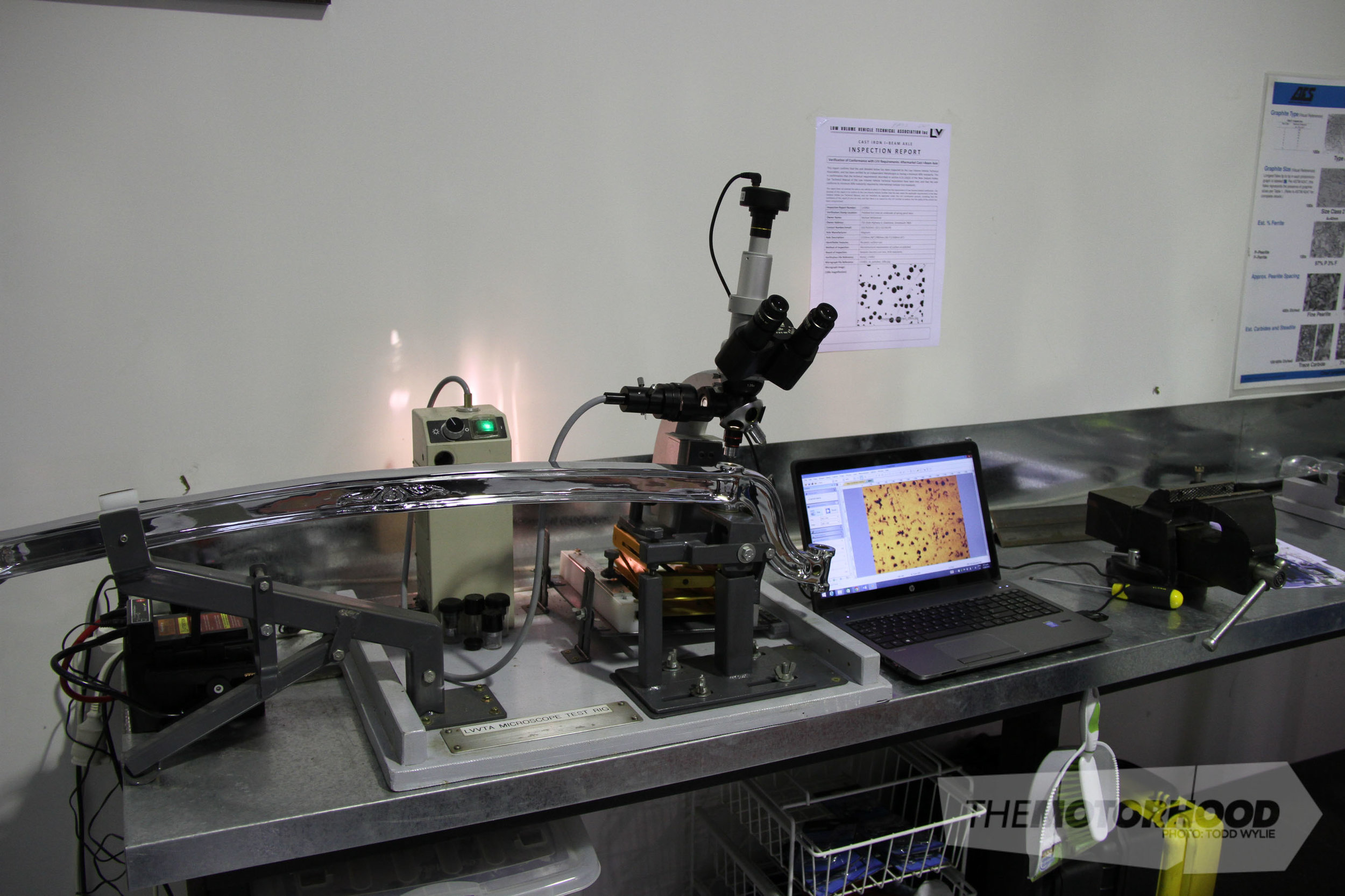
To try and ensure consistency, LVVTA not only runs regular training sessions around the country for all operating certifiers, but it has also recently added another staff member to the team to focus on training. That new staff member is Ken McAdam, who has been an LVV certifier since 1999. Even though Ken’s been involved with the system for so long, he said that spending time in the LVVTA office was a real eye-opener regarding what goes on behind the scenes. Currently, Ken’s role as training officer is for 20 hours a week, in theory, and he still operates as a certifier. He stated that part of the problem with inconsistency is due to the base vehicles themselves being inconsistent, pointing out Starcraft vans as an example: sometimes they’re built well from the factory and sometimes they’re not.
Like all other certifiers, Ken’s not in it for the money but does it because he wants to do it. He says that you can’t look at a vehicle and think you know what to expect, as you never stop learning, and everything you learn then raises another set of questions, particularly on account of the rate that vehicles are advancing.
During our visit, Ken certified a modified Mitsubishi using the workshop space of the LVVTA building to do so. The car was, by most of our standards, relatively simple. Even so, a handful of form-set paperwork needed to be completed. The car had an aftermarket driver’s seat, and the form-set for the seats and seat belts alone is 15 pages long. The car’s aftermarket wheels necessitated the five-page Wheel and Tyre Form-set, and the aftermarket steering wheel meant the Steering Form-set was required. While the car managed to pass all these, it unfortunately failed the noise test.
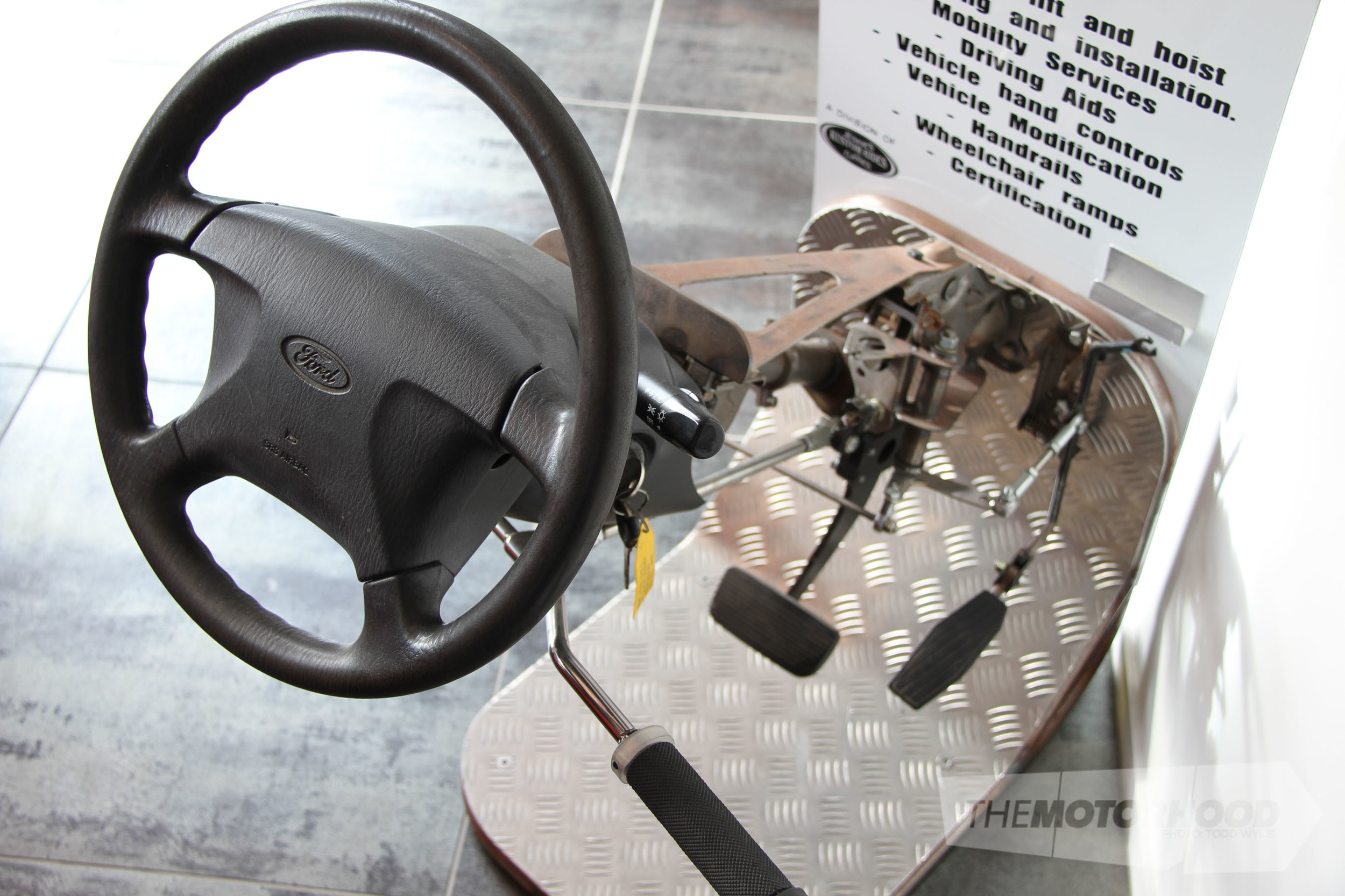
When asked about what happens in disputes, Ken said that they can generally be solved by looking at the exact wording of the rules, which, being legal documents, is generally very precise.
While Ken is a 4×4 guy at heart, he’s always tinkering with cars of one description or another. He recently purchased an old Toyota Prius, solely with the intention of pulling it apart to research electric vehicles, as, sooner or later, more electric vehicles will be modified and require certification.
Leon Cast has been with LVVTA for just over a year and comes from a background of working for MotorSport New Zealand and the NZTA. His regulatory background has made him the perfect guy to take any technical phone calls or computer-based enquiries, weeding out the simple ones before handing the hard stuff over to Justin or Dan. More than this, though, he helps to guide people through the process, making it as simple as he can for people who get confused along the way.
Leon has also become the person responsible for undertaking I-beam axle inspections out in the workshop area, a process developed by Justin. As many readers will know, a few years back, it was discovered that large numbers of poorly cast I-beams were available in the local market. In reaction to this, LVVTA set up a test rig in conjunction with a certified metallurgist and can now check the ductility of axles in-house. It does, however, still seek a professional opinion on every axle.
It’s the development of the standards and test procedures for things such as this that takes up a lot of time — time that those of us outside LVVTA generally do not see or think about.
In the axle-testing process, which takes around an hour, the area where a spring-perch bolt would reside is finely polished before the axle is placed under an extremely high-power digital microscope. The image displayed gives a very good indication of whether or not the axle has undergone a quality casting process.
What’s scary is the pile of axles sitting nearby that have tested as being dangerous! One major American axle manufacturer has actually come on board and provided LVVTA with a pile of pretested axles to replace any of its own products that prove not to be up to standard. Other manufacturers, on the other hand, have turned their noses up when informed by LVVTA of issues with their products, and, rather than offer any solution, now simply refuse to sell to New Zealand customers.
Not far from the pile of dodgy axles is the display table that LVVTA had on its stand at the recent CRC Speedshow — featuring a host of dangerous or failed components off local cars. Parts include brake calipers that have had their mounting holes elongated, a failed brand-new steering column, a three-piece welded brake pedal, welded steering shafts, and many more. A look at this table makes a person realize why the whole process exists, and that it really is focused on safety. The bag containing broken alloy wheel nuts, which came off a vehicle that was involved in a serious crash when a wheel fell off, is another great indicator that the standards haven’t been made up just to make life difficult.
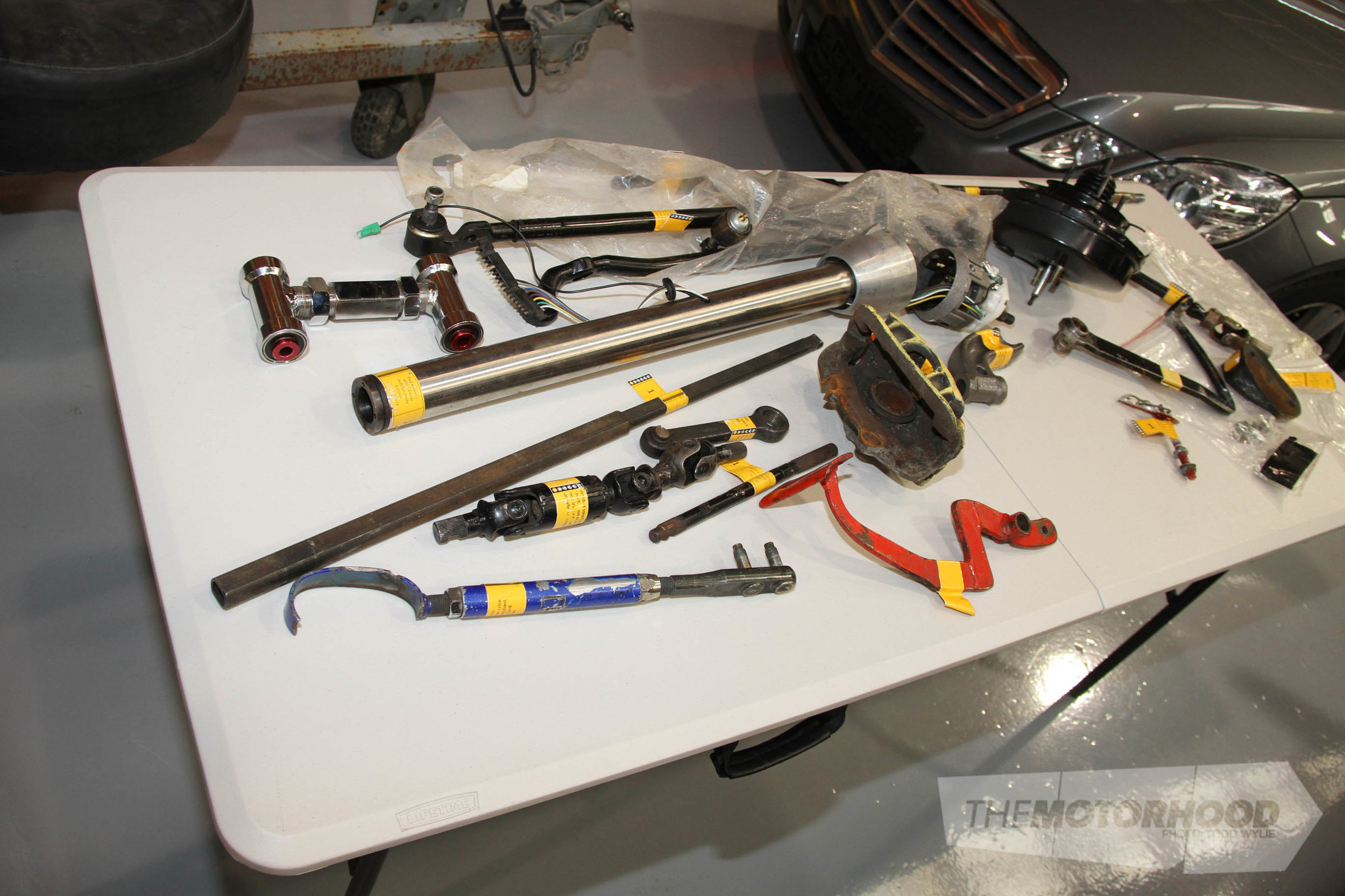
Speaking of safety, we were surprised to see an unsafe-looking Subaru sitting in the workshop, until it was pointed out that the car is used as a training mule for the police. Originally, only the local Porirua police came in to be taught about which modifications are safe and unsafe, and which ones require certification, but with the national police college not far away, all new recruits now go through the process. One side of the Subaru has been modified legally, while the other side has been done illegally — and dangerously — so it’s a great test for the officers and a great chance for the modified vehicle community to prove that not all mods are unsafe or illegal.
The final members of staff are office manager Nikki Thomas, who has been with LVVTA for seven years and married to Top Doorslammer driver Mark Thomas for even longer, and Corvette circuit-car racer Linda Washington, who looks after the constitutional side of LVVTA and has been part of the team for 15 years. Both of these ladies are as car oriented as the rest of the team, and, without the work they do behind the scenes, the system would grind to a halt.
Tony Johnson, who originally negotiated and established the certification process, is still involved, saying that when he left his job as assistant editor at New Zealand Hot Rod magazine in 1989 to tackle the LVV challenge full time, he thought he’d have everything in place in a couple of years. Now, after 25 busy years continuously developing the system, he says there’s more to do now than at the outset of the journey! His role as CEO is varied and includes not only running the organization but also looking after strategy, dealing with the government, and developing new standards and improved processes.
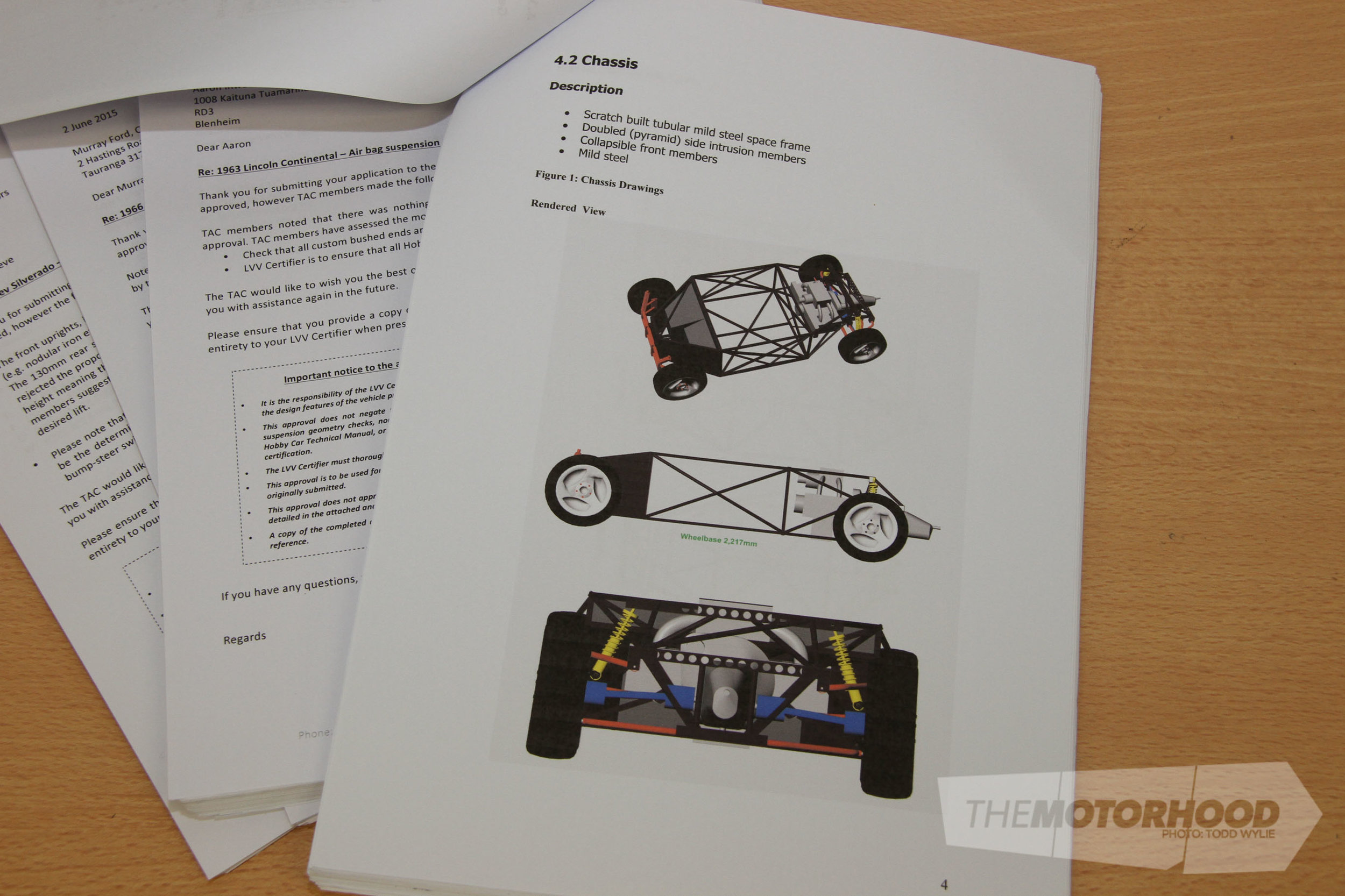
Those new standards aren’t just dreamed up, either; Tony tells us they’re only ever instituted as an alternative to new standards introduced by the NZTA, or in response to something happening locally, such as the recently publicized steering-column dropper incident. An important point that Tony makes is that LVVTA has to take its responsibilities to the government seriously; if LVVTA doesn’t do that, then it won’t be taken seriously, and the hobby will ultimately lose its unique self-governance system — which, for all the whining of some people about driveshaft safety loops and bolt grades, still allows us to build almost anything we want to build, so long as it’s safe. Currently, there are just over 137,000 certified vehicles on file, with around 520 being added each month.
At the end of our day at LVVTA, Justin pointed out that even if, as a car owner, you’re OK with having unsafe parts on your car and killing yourself if they fail, what about if your parts were to fail beside a school bus stop or fail and cause you to hit a family in oncoming traffic? For the price of a cert check, it’s not a risk that’s worth taking, and, fortunately, most people see it that way. Of course, it’s always the ones who disagree who voice their opinions the most loudly, and, sadly, they are the ones who put the whole system into jeopardy for the rest of us.
After spending time behind the scenes with the LVVTA team, we not only have a far greater understanding of what they go through and how passionate they are but also a far greater appreciation of their work. They’re all genuine car guys and girls who take it personally when people abuse them or accuse them of being a roadblock — especially when they are far from that. They’re just a bunch of hard-working people like any others, except that they’re working hard to let you drive the cars you love. They know full well it’s a privilege not a right to have the regulations and system we have. Keep that in mind next time you’re upset because your car has failed on something or you get told that you need a cert. We know we will.
Want to find out the dos and don’ts of obtaining an LVVTA certification on your own car? Check out the Preparing for cert article in the latest issue of NZV8 (No. 140) by purchasing a print copy or digital copy below:
